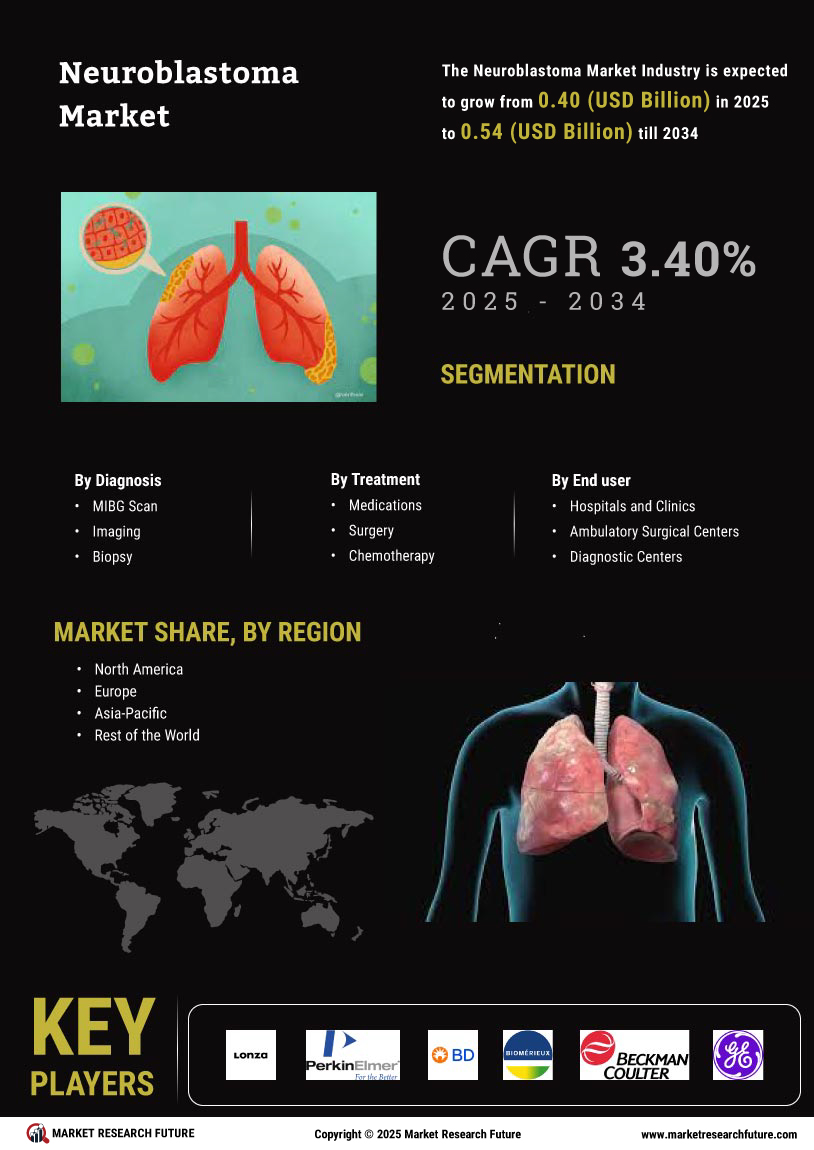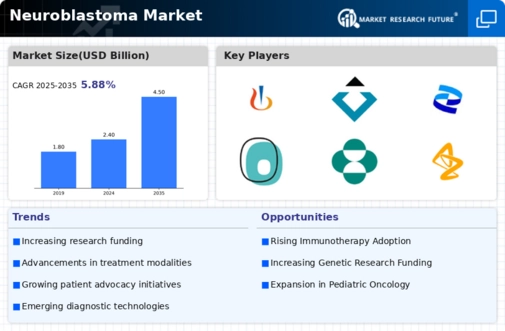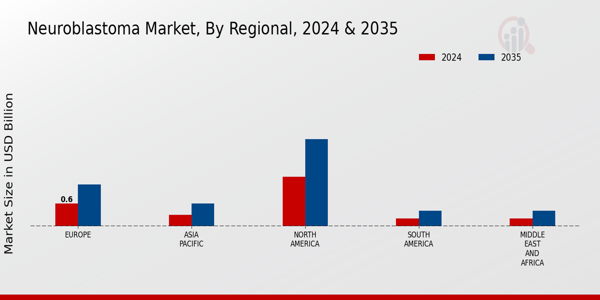Market Growth Projections
The Global Neuroblastoma Market Industry is projected to experience substantial growth over the next decade. By 2024, the market is anticipated to reach 2.4 USD Billion, with expectations to expand to 4.5 USD Billion by 2035. This growth trajectory suggests a compound annual growth rate of 5.88% from 2025 to 2035. Factors contributing to this growth include increasing incidence rates, advancements in treatment modalities, and rising awareness among healthcare professionals and the public. As the market evolves, it is likely to attract further investment and innovation, ultimately benefiting patients and healthcare providers alike.
Rising Awareness and Advocacy
Rising awareness and advocacy efforts surrounding neuroblastoma are pivotal in shaping the Global Neuroblastoma Market Industry. Non-profit organizations and advocacy groups are actively working to educate the public about neuroblastoma, its symptoms, and the importance of early detection. Campaigns aimed at increasing awareness have led to greater funding for research and improved access to treatment options. This heightened awareness is expected to result in an increased diagnosis rate, thereby expanding the market. As more families seek information and support, the demand for comprehensive care solutions is likely to grow, further driving market dynamics.
Enhanced Diagnostic Techniques
Enhanced diagnostic techniques are transforming the landscape of the Global Neuroblastoma Market Industry. Advances in imaging technologies, such as MRI and PET scans, along with genetic testing, are enabling earlier and more accurate diagnosis of neuroblastoma. These innovations facilitate timely intervention, which is crucial for improving patient outcomes. As healthcare providers adopt these advanced diagnostic tools, the market is poised for growth. The increasing emphasis on precision medicine and personalized treatment plans is likely to further propel the demand for diagnostic services, ensuring that patients receive the most effective care tailored to their specific needs.
Advancements in Treatment Modalities
The Global Neuroblastoma Market Industry is significantly influenced by advancements in treatment modalities. Innovative therapies, including targeted therapies and immunotherapy, are emerging as promising options for neuroblastoma patients. For instance, the development of monoclonal antibodies and CAR T-cell therapy has shown potential in improving survival rates. As these treatments gain regulatory approval and clinical adoption, they are likely to drive market growth. The market is expected to reach 4.5 USD Billion by 2035, indicating a robust demand for novel therapeutic approaches that enhance patient outcomes and quality of life.
Increasing Incidence of Neuroblastoma
The Global Neuroblastoma Market Industry is witnessing a rise in the incidence of neuroblastoma, particularly among children under the age of five. This increase is attributed to various factors, including genetic predispositions and environmental influences. The World Health Organization reports that neuroblastoma accounts for approximately 7-10% of all childhood cancers. As awareness grows and diagnostic techniques improve, more cases are being identified, contributing to the market's expansion. In 2024, the market is projected to reach 2.4 USD Billion, reflecting the urgent need for effective treatment options and supportive care for affected families.
Growing Investment in Research and Development
Investment in research and development is a crucial driver for the Global Neuroblastoma Market Industry. Governments and private organizations are increasingly funding research initiatives aimed at understanding the biology of neuroblastoma and developing new treatment strategies. For example, the National Cancer Institute allocates substantial resources to neuroblastoma research, fostering collaborations between academic institutions and pharmaceutical companies. This influx of funding is likely to accelerate the discovery of innovative therapies and diagnostic tools, contributing to a projected compound annual growth rate of 5.88% from 2025 to 2035, thereby enhancing the market's overall landscape.























Leave a Comment